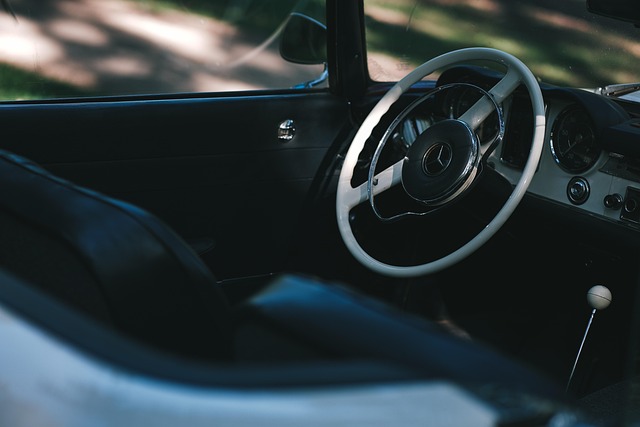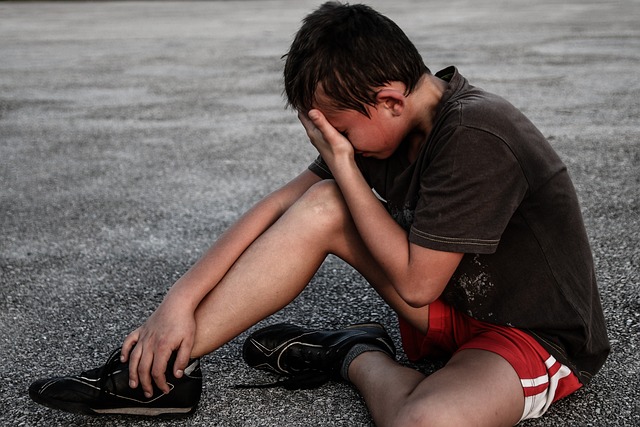Motorcycle lane splitting offers benefits for traffic flow but carries substantial risks, including collisions and severe injuries in accidents. Riders should use reflective gear, impact-absorbing vests, gloves, boots, and high-quality helmets for safety. Understanding local laws, adopting safe techniques, maintaining vehicles, and signaling intentions can significantly reduce these risks. Despite its congestion-reducing advantages, lane splitting heightens dangers; staying alert and consulting legal professionals after accidents, including motorcycle lane splitting accidents, is recommended to explore compensation options.
In the fast-paced world of motorcycles, lane splitting—the practice of passing other vehicles within a single lane—has both risks and benefits. This article delves into understanding these dynamics, focusing on essential gear that enhances safety during lane splitting. We explore best practices for accident prevention, empowering riders to navigate roads more securely. By combining awareness, the right equipment, and proven techniques, motorcyclists can mitigate risks associated with motorcycle lane splitting accidents.
- Understanding Lane Splitting Risks and Benefits
- Essential Gear for Safer Lane Splitting
- Best Practices for Effective Accident Prevention
Understanding Lane Splitting Risks and Benefits

Motorcycle lane splitting, also known as filter farming, involves motorcyclists weaving between cars in traffic to reach higher speeds and reduce stop-and-go congestion. While this practice can enhance flow and efficiency on highways, it comes with significant risks, including potential collisions with cars or other motorcycles. Understanding these dangers is crucial for both riders and fellow motorists. Motorcyclists must be aware of the challenges of predicting car movements and maintaining safe distances, especially at higher speeds.
On the other hand, lane splitting offers benefits, such as reduced travel times and improved road safety overall. Many advocates argue that skilled riders can execute this maneuver safely, contributing to less congestion and shorter commute times. However, it’s essential to recognize that not all situations are suitable for lane splitting, and riders should exercise caution. Comparing it to similar scenarios like nursing home abuse or truck accident compensation, motorcycle lane splitting accidents may lead to severe injuries or even fatalities, underscoring the need for proper gear and awareness to mitigate these risks effectively.
Essential Gear for Safer Lane Splitting

Motorcyclists who engage in lane splitting—the practice of weaving between cars in traffic—need specialized gear to enhance their safety and reduce the risk of severe injuries during a motorcycle lane splitting accident. Essential equipment includes high-visibility clothing, such as reflective jackets and pants, to ensure maximum visibility to other drivers. Advanced protective gear, like impact-absorbing vests and reinforced leather gloves, plays a crucial role in mitigating injuries from slip and fall settlements that might occur when lane splitting.
Additionally, motorcycle riders should invest in durable and well-fitting boots to prevent serious leg injuries during accidents. High-quality helmets designed for optimal protection against head trauma is non-negotiable. Beyond gear, understanding local laws and practicing safe lane splitting techniques are vital components of accident prevention. Keeping these aspects in mind can significantly contribute to a safer riding experience, minimizing the chances of partnerships disagreements or homeowner insurance claims arising from motorcycle lane splitting accidents.
Best Practices for Effective Accident Prevention

Motorcyclists who engage in lane splitting—the practice of riding between lanes or close to the vehicles ahead—must adhere to best practices for effective accident prevention. First and foremost, ensure your motorcycle is well-maintained and equipped with safety features like reflective gear and a bright headlight. Proper training and experience are crucial; learn the local laws and conditions to anticipate potential hazards.
Communication is key; use hand signals to indicate your intentions clearly to other drivers. Maintain a safe speed and keep a safe distance from both vehicles and pedestrians. In case of an unexpected event, be prepared to react swiftly but calmly. Remember that while lane splitting can help avoid traffic congestion, it also increases risks; so, always stay alert and consider consulting a motor vehicle accident attorney if you’re involved in a motorcycle lane splitting accident, along with exploring car accident compensation or truck accident compensation options as needed.
Motorcycle lane splitting, while potentially beneficial for reducing traffic congestion, carries significant risks. By understanding the dynamics and implementing best practices, along with wearing essential gear like advanced protective clothing and communication devices, riders can navigate these challenges safer. Armed with knowledge and proper preparation, it’s possible to minimize the chances of motorcycle lane splitting accidents and enjoy a smoother ride.






